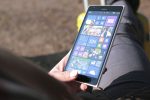Augumenta, Ltd., the Finland-based provider of user interface tools for wearable computing, today announced release of its gesture-based control toolkit to qualified developers of smart glass applications for enterprise users. In addition to release of the Software Development Kit (SDK), Augumenta announced its first external financing round, led by Butterfly Ventures.
“Release of our SDK to enterprise developers began in October, beginning with pilot projects to use gesture control in smart glass applications for natural resources exploration, electric generation plant operations, and in manufacturing facilities,” said Tero Aaltonen, Co-Founder and CEO of Augumenta. “We’re pleased to be on schedule with all key milestones in our business plan, including traction with enterprise developers, growing engagement with smart glass providers and funding. With pilot project engagements in North America and Asia, we have proven global interest in our tools. With the new funding, we are able to further accelerate our product development and go-to-market activities.”
“Wearable computing and augmented reality comes with some new user interface challenges like real time gesture recognition. Augumenta’s team is focused on solving these challenges and their know-how is in the core of augmented reality. For example, Augumenta is able to recognize gestures with low power consumption,” commented Ville Heikkinen, Partner of Butterfly Ventures.
The initial release of Augumenta’s gesture control SDK provides smart glass application developers with a vocabulary of eight dynamic gestures that allows hand signals to be used as commands. The gestures are differentiated from static and moving background objects using the single camera used in the readily available smart glass devices, such as the Epson Moverio BT-200 and Google Glass.
Announced in July 2014, the gesture control SDK is the first component of the Augumenta Interaction Platform. In 2015, the company will expand the platform with release of a first-of-its-kind interactive virtual surface toolkit. Virtual surfaces are privately viewable images that are seen only by the smart glass user and respond to such inputs as data entry on a numbered keypad or moving slider bars to change a machine setting.





